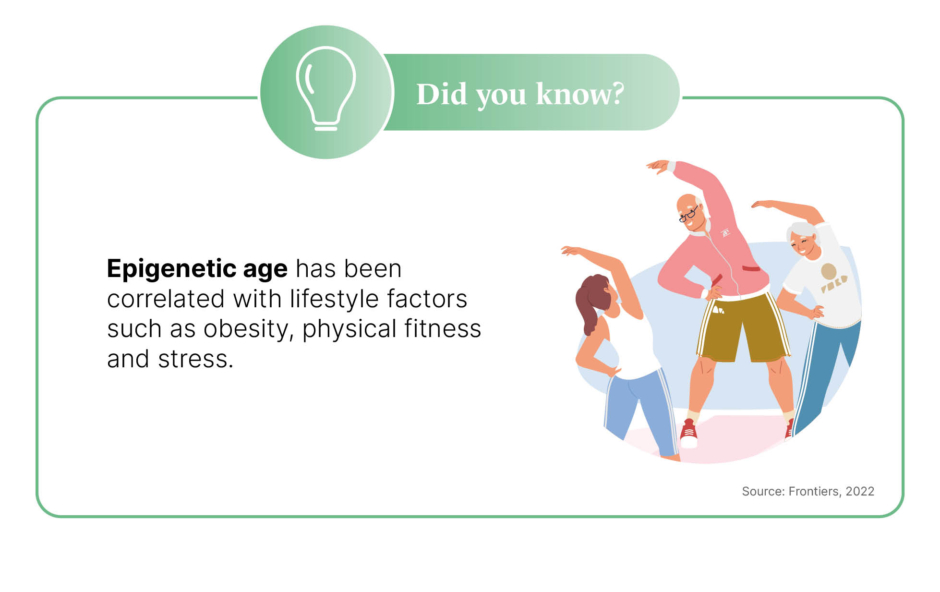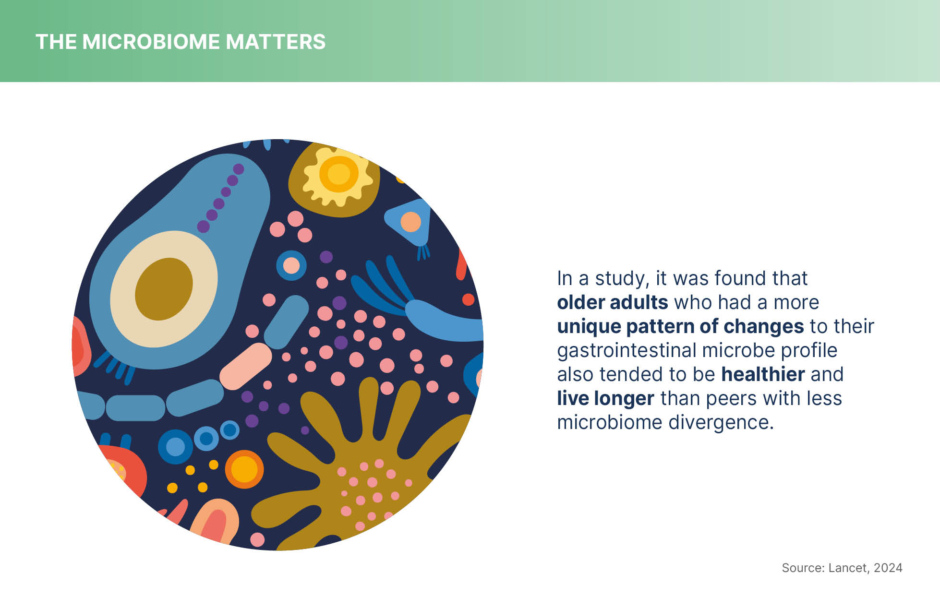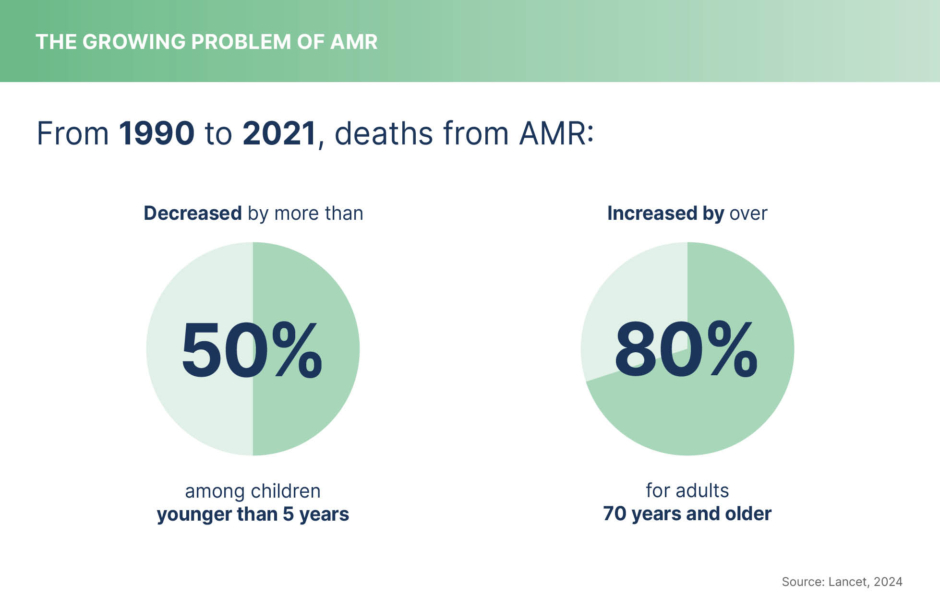From DNA clocks to gut bugs, pharma’s role in ageing needs to evolve fast. Exploring the key themes from WIRED Health 2025, discover how the industry could help add years to life
Words by Isabel O’Brien
The pursuit of a longer life has fascinated humanity for centuries. Yet, modern science is only now shifting its focus from adding years to life to enhancing the quality of those years.
Healthspan, the period of life spent in good health and free from chronic disease, is fast becoming the more meaningful metric in conversations around longevity. For the pharmaceutical industry, that shift poses both a challenge and a significant opportunity: a chance to move beyond reactive treatments, and embrace a more preventative, personalised approach to ageing.
How epigenetics is unlocking the secrets of biological ageing
One of the most compelling developments in longevity research is in epigenetics, particularly the study of ‘epigenetic clocks’. These clocks measure biological age based on DNA methylation patterns – chemical changes that accumulate on the genome over time – revealing how external factors like stress, obesity and exercise influence the way we age on a cellular level.
At WIRED Health 2025, Steve Horvath, Principal Investigator, Altos Labs, and a pioneer in this space, puts it succinctly: “The DNA molecule is one gigantic clock in your cells.” His research shows that these methylation patterns are observed across species and can be used to estimate relative age – offering a promising biomarker of biological ageing. This insight opens the door to new possibilities for pharma: targeted therapies that don’t just treat age-related disease, but actively slow biological decline.
There are already intriguing leads. Research into metabolic states such as torpor – a kind of temporary hibernation in animals – has shown promise in slowing down ageing at the molecular level. The question now is whether similar processes could be safely replicated in humans. If so, it could mark a step change in how we approach ageing, moving the industry closer to a future where living longer also means staying healthier for longer.
The DNA molecule is one gigantic clock in your cells

The microbiome: A powerful key to healthy ageing
While epigenetics offers one lens into ageing, another equally important one lies within us – quite literally. The microbiome, the community of trillions of microorganisms living in and on the body, plays a critical role in everything from immunity to metabolism, inflammation to cognition. And increasingly, its influence on the ageing process is coming into focus.
“We’re only 50% human; our other half is microbial,” says Ara Katz, Co-Founder and Co-CEO, Seed Health, at WIRED Health. It’s a compelling reminder that our microbial health is deeply entwined with our overall wellbeing – and that supporting it may be central to extending healthspan.
Emerging research points to links between microbiome diversity and biological ageing. One study, highlighted by Horvath, suggests that daily omega-3 supplements could slow epigenetic ageing – though more research is needed. For pharma and consumer health companies alike, this offers fertile ground for developing microbiome-targeted therapies or supplements that support ageing from the inside out.
In addition, disruption of the microbiome, known as dysbiosis, has been linked to obesity, cardiovascular disease, cancer and more. “Our modern lifestyle and built environment, including antibiotic overuse, processed diets and chronic stress, are disrupting the healthy function of our microbiome at scale,” Katz explains. In response, the pharma industry also has an opportunity to explore new microbiome diagnostics and therapeutics that bring precision and personalisation to preventative care.
We’re only 50% human; our other half is microbial

Antimicrobial resistance: A growing threat to healthy ageing
While new hope in longevity science emerges, an old enemy continues to grow in the background: antimicrobial resistance (AMR). While less futuristic than DNA clocks or microbial therapies, it presents a very real, very immediate threat – one that risks cutting short lives that have plenty of fuel left in the tank.
“What if the future of our health system saw a return to the Victorian era when a scratch from the garden resulted in infection, sepsis and death?” asks Dame Sally Davies, Former Chief Medical Officer for England and current UK Special Envoy on AMR, also at WIRED Health. “One in four cancer patients get serious infections that can take them into hospitals… People have died not from cancer, but from AMR,” she adds.
The rise of drug-resistant bacteria has exposed cracks in current approaches. For pharma, this isn’t just a call to develop new antibiotics – it’s an invitation to level up its approach. Stewardship, innovation and sustainable antimicrobial development are all vital. So too is exploring adjacent approaches, such as microbiome restoration therapies that help reset bacterial balance in patients hit by recurrent infections.
The financial case for investment is also clear: every dollar spent on AMR solutions returns $24, according to Dame Davies. It’s rare to see such a direct line between innovation and impact.
People have died not from cancer but from AMR

Pharma’s role in advancing healthy ageing: A call to action
As the science of ageing evolves, so too must the pharma industry’s approach. The opportunity lies in embracing a broader, more holistic vision of health – one that values prevention as much as cure, and partners closely with healthcare professionals to translate new discoveries into meaningful clinical practice.
That translation hinges on education. To truly shift the paradigm, HCPs must be equipped with the latest insights, not just through traditional channels, but via innovative, interactive formats that enhance engagement and improve learning outcomes, such as those offered by EMJ.
“I want to tell you, hang in there,” Horvath says with a smile, closing his WIRED talk. “I’m quite confident that sooner or later, we will have safe interventions that slow your biological clock.”
The longevity race is no longer about simply adding years – it’s about making those years count. From DNA methylation to microbial health to the fight against resistant bacteria, the future of healthy ageing is already taking shape. Now the question is: will the industry move fast enough to meet it?









